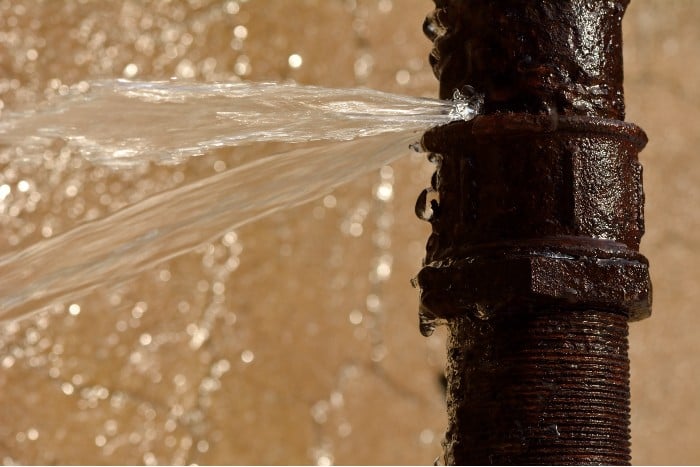We've stumbled upon this post about How to Find Water Leaks directly below on the net and think it made sense to talk about it with you over here.

Leaks not just cause waste of water yet can also trigger unneeded damage to your house and promote undesirable natural development. By comprehending as well as looking for day-to-day scenarios that create leakages, you can protect your house from future leakages as well as unneeded damages.
Instantaneous temperature level changes.
Extreme temperature adjustments in our pipes can cause them to broaden and get suddenly. This growth and tightening might trigger splits in the pipes, specifically if the temperature are listed below cold.
Corroded water supply
This could be the reason of discoloration or warping on your water pipes. If our plumbing system is old, take into consideration changing the pipes since they are at a greater danger of corrosion than the more recent designs.
Defective Pipeline Joints
The factor at which your pipes attach is often the weakest web link in the waterline. Pipe joints can wear away gradually, resulting in water leakages. Sadly, most of pipe joints are not conveniently visible. If you have noisy pipes that make ticking or banging sounds, especially when the hot water is activated, your pipe joints are probably under a great deal of stress. It is advisable to have your plumber examine your system once a year.
Encroaching origins
Many water leakages start outside the residence rather than inside it. You may notice wet spots or sinkholes in your yard, as well as that could imply that tree origins are invading water lines causing water to leak out.
Poor Water Connectors
Sometimes, a leak can be triggered by loosened tubes and pipes that supply your appliances. More often than not, moving is what creates the loosened water Connections. You might find in the case of a washing device, a pipe might spring a leakage as a result of drinking throughout the spin cycle. In case of a water links leak, you may notice water running directly from the supply line or pools around your devices.
Blocked Drains
Clogged drains pipes might be frustrating and also inconveniencing, yet they can often end up triggering an overflow leading to break pipelines. Keep getting rid of any kind of materials that might go down your drains pipes that could block them to stay clear of such inconveniences.
All the above are root causes of leakages however not all water leakages result from plumbing leaks; some leaks could originate from roofing system leakages. All leakages ought to be fixed instantly to prevent water damages.
Leakages not just trigger waste of water but can also trigger unnecessary damage to your home and promote unwanted natural development. By looking and also recognizing for day-to-day circumstances that cause leakages, you can shield your house from future leakages as well as unnecessary damage. Today, we will look at 6 leak creates that may be causing your pipelines to leak.
At times, a leak can be created by loosened hoses and also pipelines that supply your home appliances. In case of a water links leak, you might discover water running straight from the supply line or puddles around your devices.
How To Check For Water Leak In Your Home
How To Check for Leaks
The average household's leaks can account for nearly 10,000 gallons of water wasted every year and ten percent of homes have leaks that waste 90 gallons or more per day. Common types of leaks found in the home are worn toilet flappers, dripping faucets, and other leaking valves. These types of leaks are often easy to fix, requiring only a few tools and hardware that can pay for themselves in water savings. Fixing easily corrected household water leaks can save homeowners about 10 percent on their water bills.
To check for leaks in your home, you first need to determine whether you're wasting water and then identify the source of the leak. Here are some tips for finding leaks:
Take a look at your water usage during a colder month, such as January or February. If a family of four exceeds 12,000 gallons per month, there are serious leaks.
Check your water meter before and after a two-hour period when no water is being used. If the meter changes at all, you probably have a leak.
Identify toilet leaks by placing a drop of food coloring in the toilet tank. If any color shows up in the bowl after 10 minutes, you have a leak. (Be sure to flush immediately after the experiment to avoid staining the tank.)
Examine faucet gaskets and pipe fittings for any water on the outside of the pipe to check for surface leaks.
Undetected water leaks can happen without the home or business owner even realizing. If you suspect a water leak, but not able to find the source. It is time to contact a professional water leak detection service, The Leak Doctor.
How To Find a Water Leak In Your Home
https://www.leakdoctor.com/blog/How-To-Check-For-Water-Leak-In-Your-Home_AE197.html

Do you appreciate more info about Common Water Leaks In House? Post a remark down the page. We'd be interested to listen to your feelings about this content. In hopes that you visit us again soon. Do you know about somebody else who is fascinated with the niche? Why not promote it. Thank-you for your time invested reading it.
Get professional leak detection today.